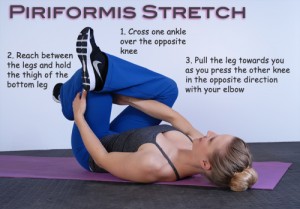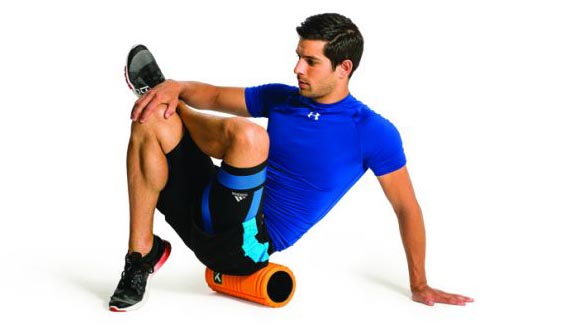
What is Piriformis Syndrome?
- Piriformis Syndrome is caused by inflammation of soft tissue or muscle spasm in this area which can cause imflammation or muscle tension in the Piriformis muscle.
Some common symptoms include:-
- Pain with sitting standing or walking for more than 20 minutes
- Intense pain with sitting or squatting
- Pain and/or pins and needles, numbness, burning, tingling sensations radiating from the lower back down the back of the thigh.
- Pain that improves with movement.
Causes of Piriformis Syndrome?
- Activities, such as long distance running or prolonged standing without proper stretching are often causes of Piriformis Syndrome.
- Any muscle imbalance around this area will also be a contributing factor.
Treatment
- In the intial stages the goal is to reduce pain. Ice can help reduce muscle spasm and nerve pain in the first day or so. However longer term heat application is more beneficial as it helps bring fresh blood to the area and helps relax this muscle.
- Heat should not be applied if there is a suspected muscle tear.
- If heat is used then it should be applied for 15/20 minutes 2-3 times per day.
- Do not apply heat pads directly to the skin as these can cause burns and I have seen plenty of these in clinic.
- Massage
- Light massage and mobilisation techniques can help release muscle tension and active techniques can be used to stretch the muscle.
- Massage on the muscles around the Glutes and legs can be beneficial as compensatory tension can arise through changed movement due to pain.
- Kinesio taping can also be applied across this muscle to help encourage good blood flow in this area and help remove direct pressure on this muscle.
- Stretching
- Hold this stretch for around 20-30 seconds and repeat as often throughout the day as possible (2-4 x recommended).

- Foam/Ball Rolling
- This can help release the Piriformis Muscle. I would recommend using a tennis ball first against the wall as you can then adjust the pressure. You don't want to create too much pressure on this area initially as this will cause more inflammation. I would also work around this muscle (legs/glutes) too, to reduce compensatory tension.

- Strengthening
Strengthening is important should be done on a daily basis immediately followed by stretching exercises as the muscle will be more likely to relax into a stretch if it has been worked and warmed up.
The more that you sit then the more often this exercise should be done. At least 2 times a day.
Clam exercise - Lay on your side, bend the knees and position them forwards so that your feet are in line with your spine.
Make sure your top hip is directly on top of the other and your back is straight. Keeping the ankles together, raise the top knee away from the bottom one. Work until you feel the muscle starting to fatigue but do not overdo it especially in the early stages. Slow controlled movements are important.
The above advice is quite general and it is important that your therapist really understands what is causing this muscle to over work and tighten up so that specific exercises can be provided to avoid a reoccurrence.
As always check in with a professional to get clear guidance.

